Abstract
Random-dot stereograms were shown to a sample of strabismic patients for whom there was clinical evidence of stereopsis. Two kinds of sterograms were used, one of the usual sort and the other having a contour surrounding the disparate area in each field of view. The patients tested could be clearly classified as belonging to one of three response groups. The first group could fuse both kinds of stereogram, the second could fuse only he contoured kind, and the third could not fuse either kind. This grouping was found to relate to the degree to which bifoveal binocular single vision had been absent in the clinical histories of these patients. The result is discussed in terms of the consequences for vergence and stereopsis of period of absence of normal binocular function.
Full text
PDF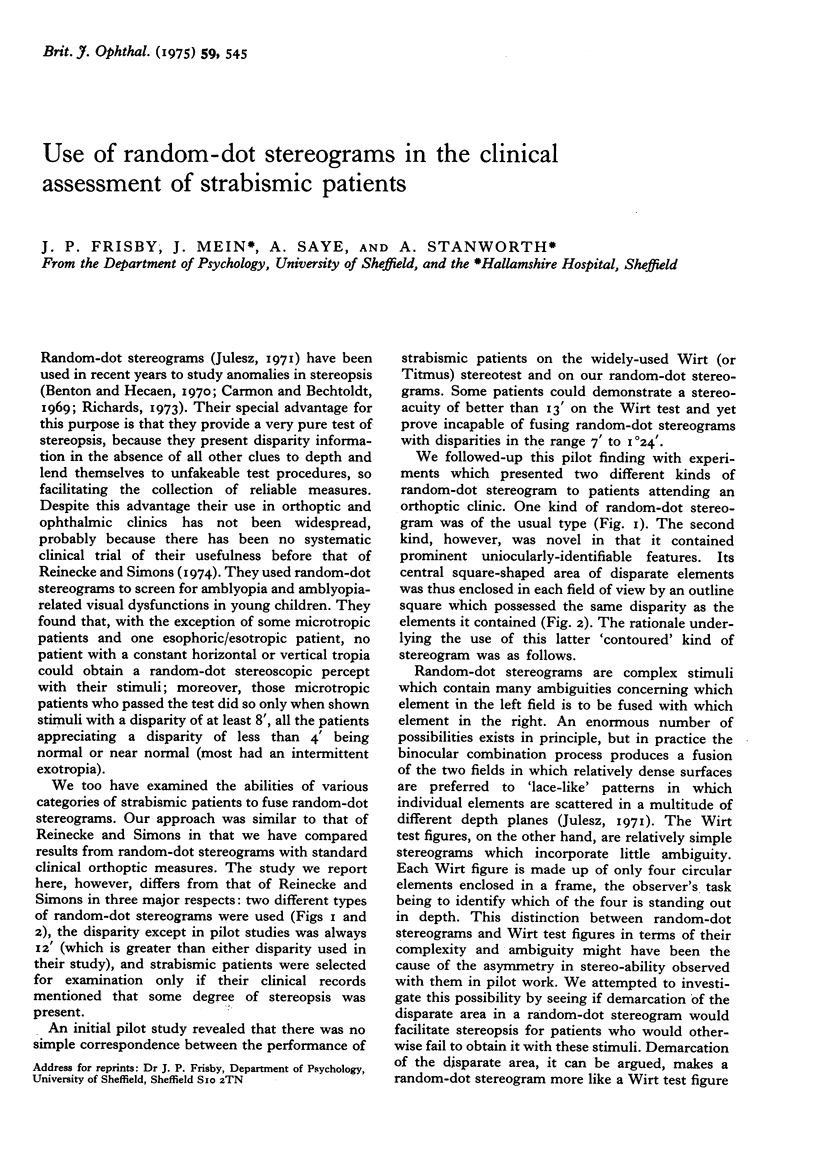
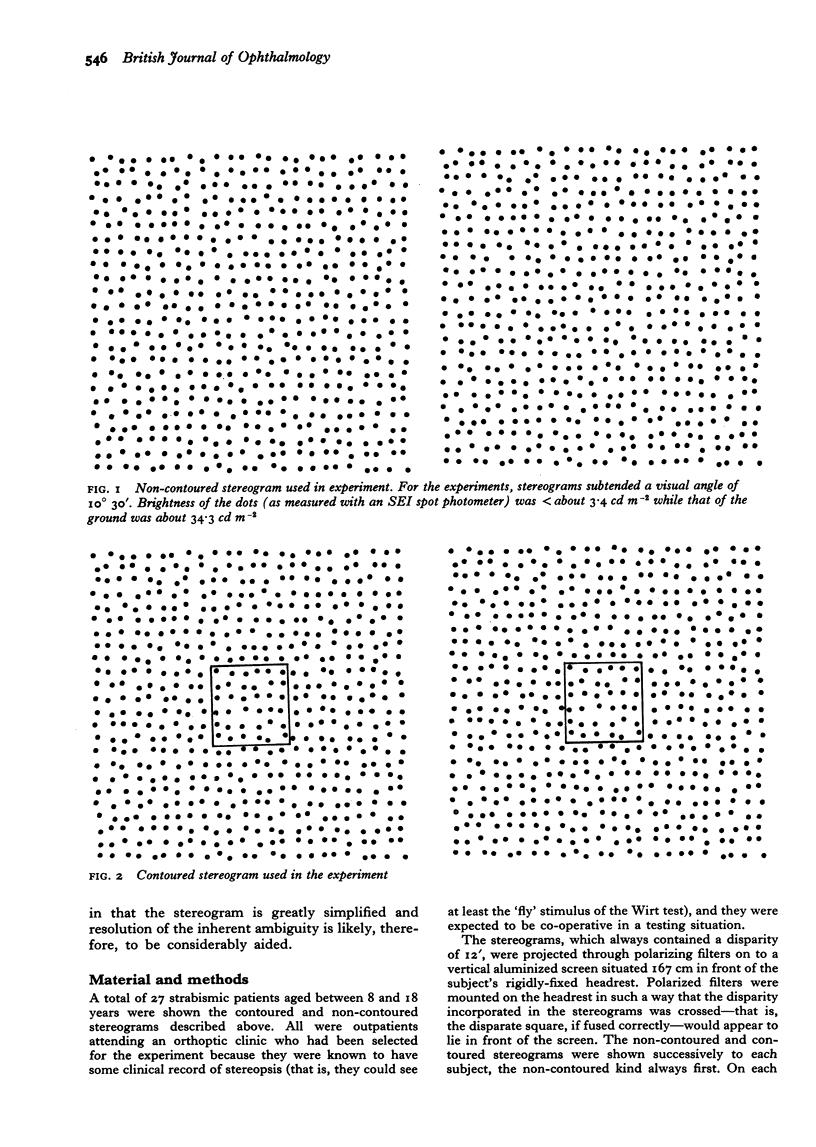
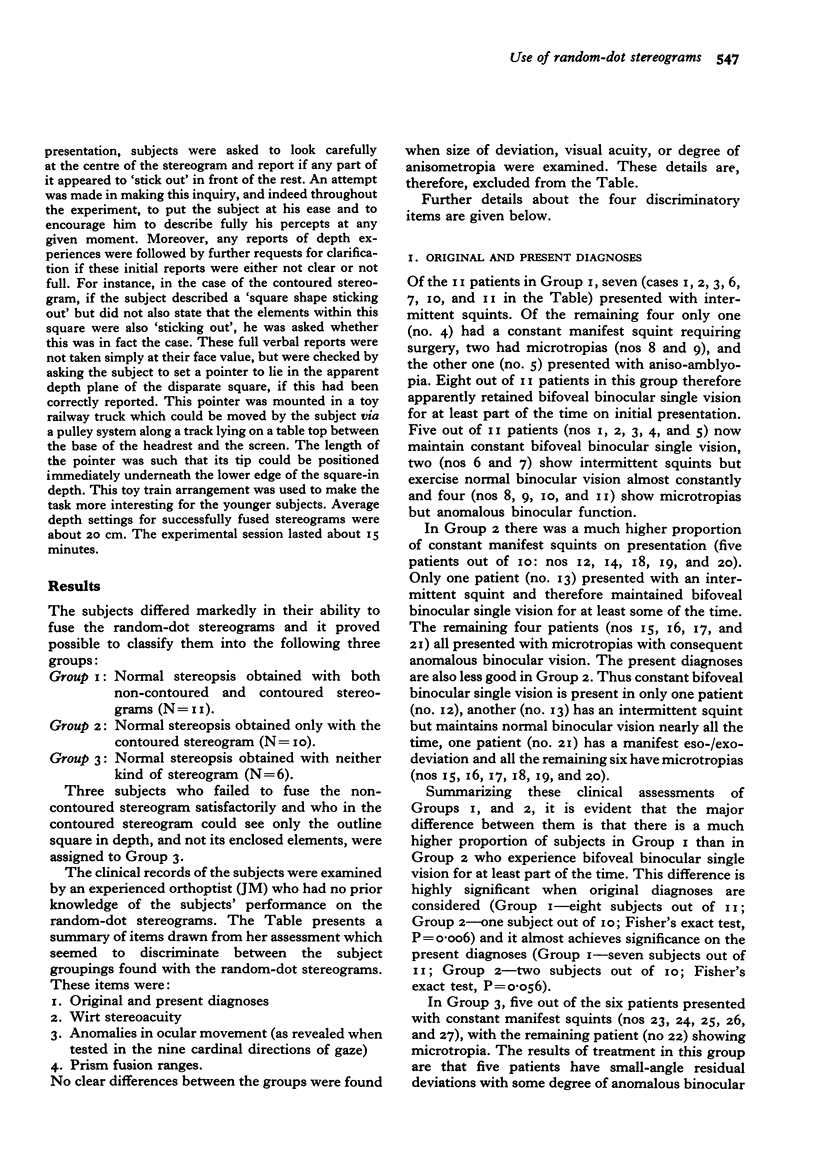
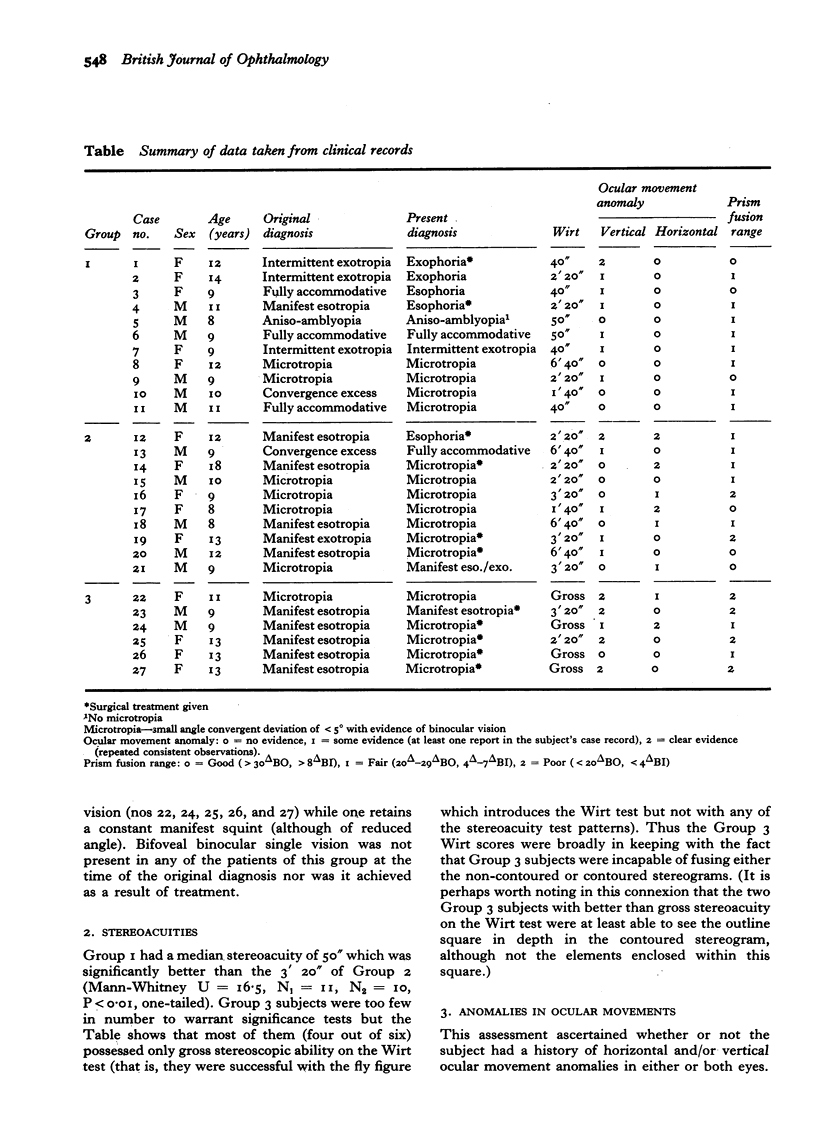
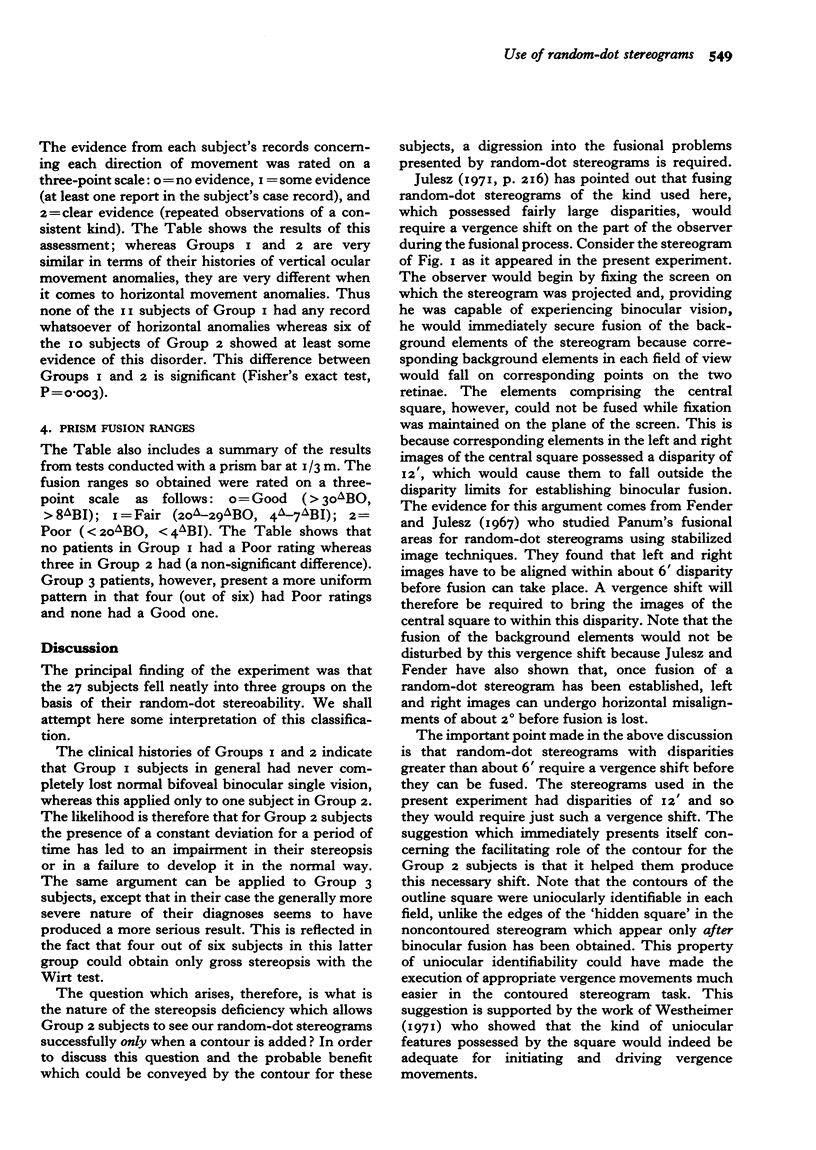
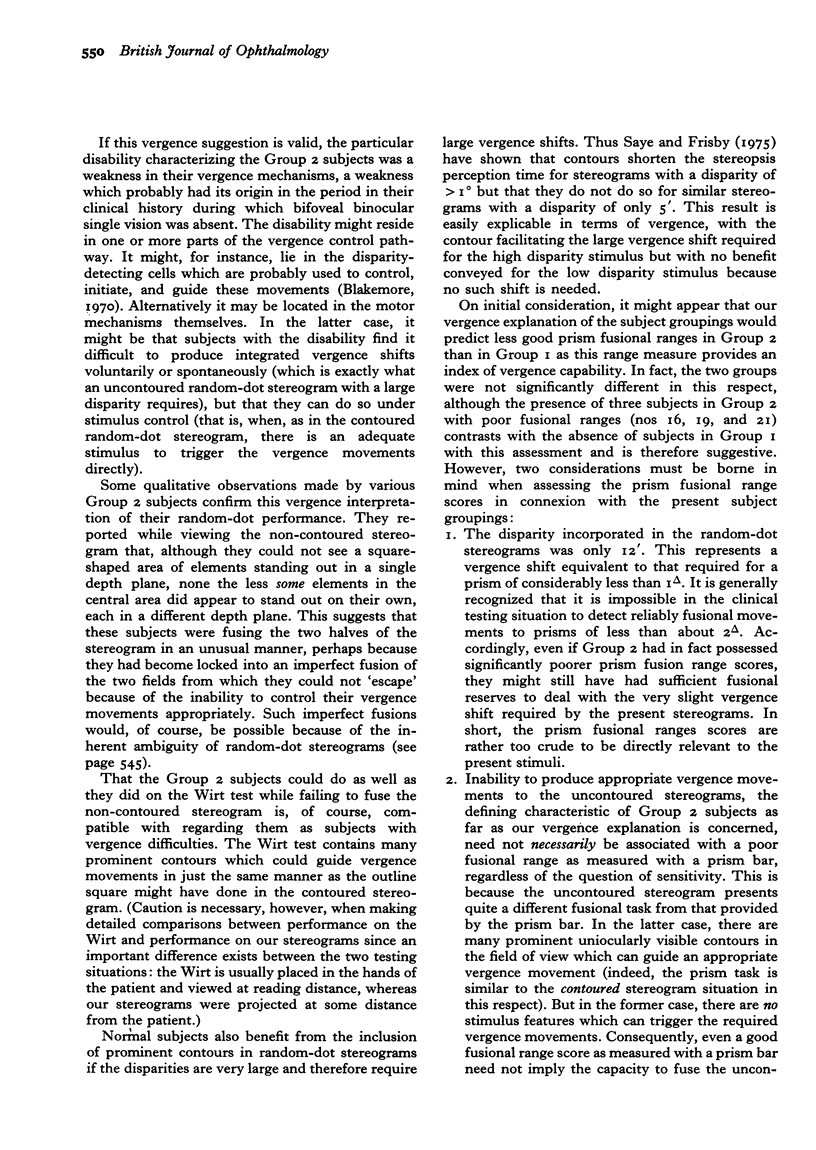
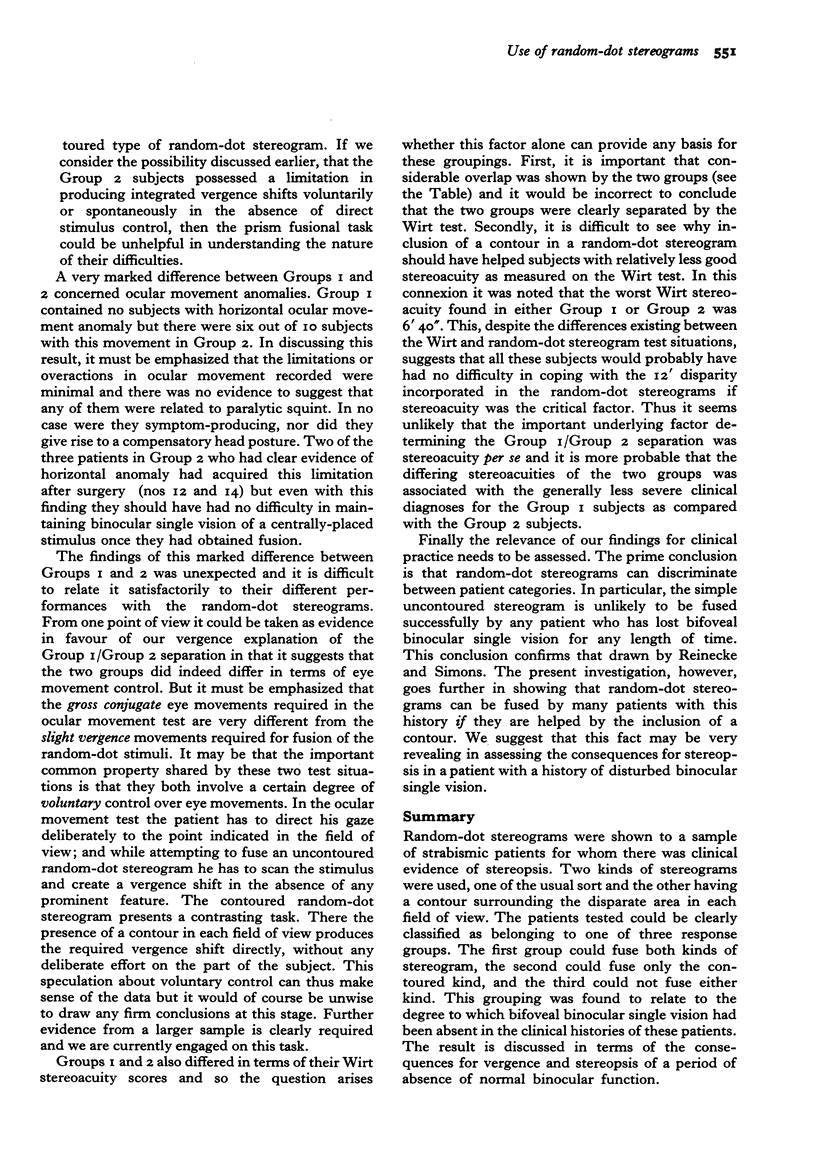
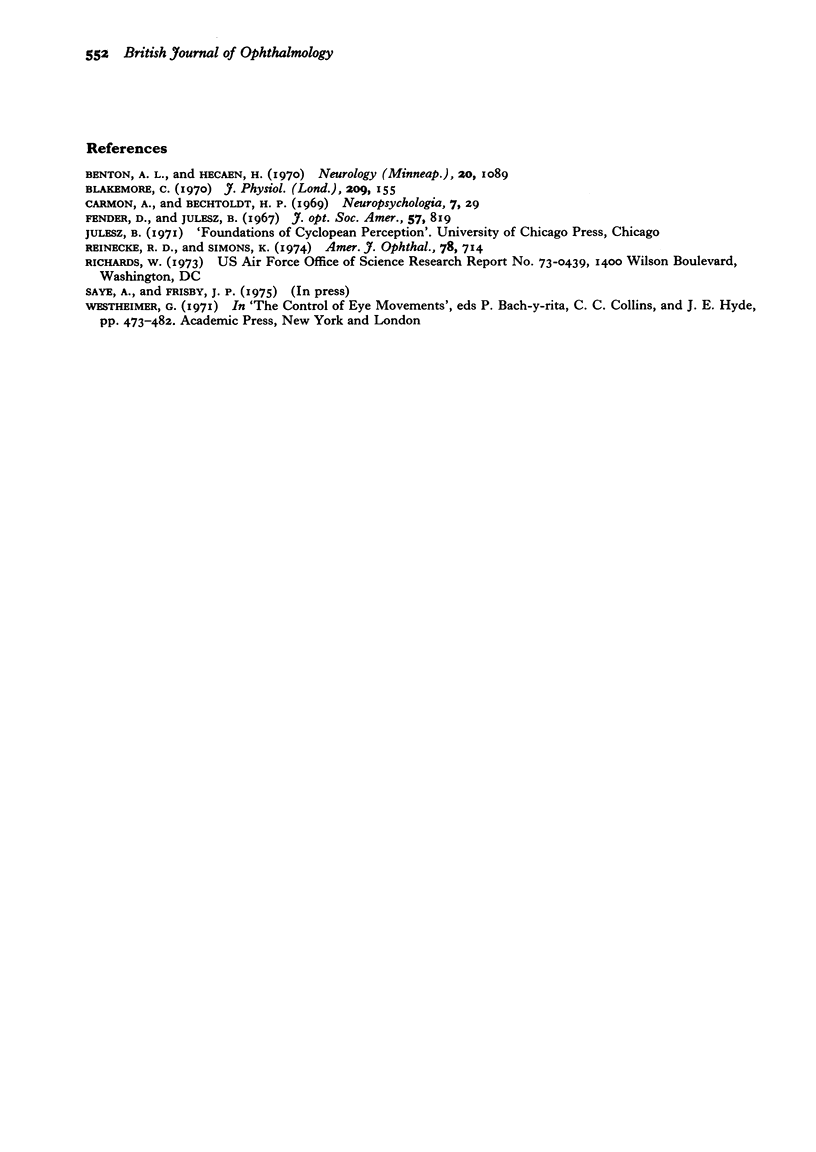
Selected References
These references are in PubMed. This may not be the complete list of references from this article.
- Blakemore C. The representation of three-dimensional visual space in the cat's striate cortex. J Physiol. 1970 Jul;209(1):155–178. doi: 10.1113/jphysiol.1970.sp009160. [DOI] [PMC free article] [PubMed] [Google Scholar]
- Reinecke R. D., Simons K. A new stereoscopic test for amblyopia screening. Am J Ophthalmol. 1974 Oct;78(4):714–721. doi: 10.1016/s0002-9394(14)76311-1. [DOI] [PubMed] [Google Scholar]


